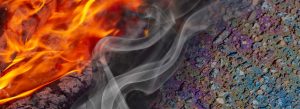Publication Journal of Analytical Toxicology, April 2022 Authors Amanda L A Mohr | Center for Forensic Science Research and Education Barry K Logan | Center for Forensic Science Research and Education Melissa F Fogarty | Center for Forensic Science Research…
Tag: Report (page 7)
Guidelines for the Use of Terrestrial LiDAR Scanners in Criminal Justice Applications
Date March 2022 Overview Terrestrial LiDAR scanning devices (also known as terrestrial laser scanning devices, TLS) acquire complex geometric data that capture a three-dimensional representation of a scene; this technology is used in criminal justice applications such as documenting a…
Human Factors in Forensic Science Practice Sourcebook
Publication Forensic Science International: Synergy, March 2022 Editors Heidi Eldridge, PhD | RTI International Barbara A. Spellman, JD, PhD | University of Virginia School of Law Thomas Busey, PhD | Indiana University, Psychological and Brain Sciences Working Group Members Paul…
Annual Infographics
The 2022 Forensic Technology Center of Excellence’s Annual Metrics Report and infographic is here! View all Annual Metrics Reports and infographics below! 20232022202120202019201820172012-2016 2023Click here to view the 2023 infographic PDF! Click here to see the 2023 Year…
Development of an Extraction Technique for Ignitable Liquid Residues (ILR) in the Field using Capillary Microextraction of Volatiles (CMV) and Person-Portable GC-MS
← Additional Portable Instrumentation for On-Scene Fire Debris Analysis Resources Date February 2022 Overview The work in this report is an extension of the capillary microextraction of volatiles (CMV) application (M. Torres et al., 2020) by Florida International University, reported…
Evaluation of Capillary Microextraction of Volatiles (CMV) Coupled to a Person-Portable Gas Chromatograph Mass Spectrometer (GC–MS) for the Analysis of Gasoline Residues
← Additional Portable Instrumentation for On-Scene Fire Debris Analysis Resources Publication Forensic Chemistry, March 2022 Authors Michelle N. Torres | Florida International University José R. Almirall | Florida International University Abstract A novel dynamic headspace extraction device, the capillary microextraction of…
Capturing Key Research Outcomes Using Short Video Vignettes: A Guidance Document
Date February 2022 Author David Matthew | David Matthew LLC, Wichita, Kansas Overview This document outlines the process of designing engaging video vignettes to disseminate results from complex research projects in a manner that is easily digestible by practitioners. More…
A Landscape Study of Electronic Case Management Systems for Medical Examiners and Coroners
Date February 2022 Overview Medical examiner and coroner (ME/C) offices sit at the nexus of forensic sciences and public health. These offices play a key role in the investigation of suspicious, unexplained, or unexpected deaths, dissemination of important data to…
Model Strategies for Field Drug Testing Programs
Date January 2022 Overview The purpose of this In-Brief is to describe field drug testing programs (FDTPs) that provide a training framework for certifying law enforcement officers to presumptively identify drugs in the field. This In-Brief highlights the FDTPs of…
Medical Examiner and Coroner Outsourcing Study – A Qualitative Study and Cost-Benefit Analysis
Date January 2022 Overview Medical examiners and coroners (MECs) are often at the center of highly stressful and emotional situations as a part of their daily job duties. Those events are compounded by continued and escalating high caseloads and inadequate…










